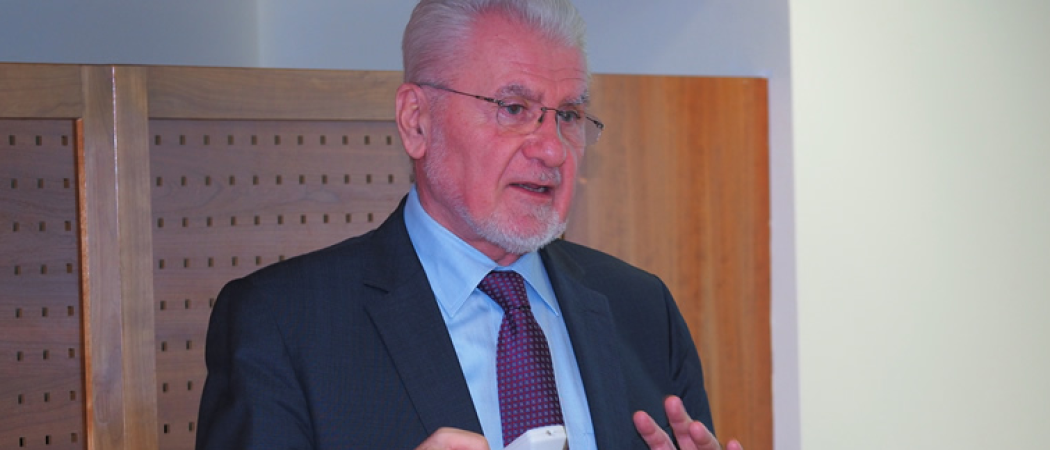A bigger budget, fair salaries for researchers and more money for countries with weaker research systems are on Hungary’s Framework Programme 9 wish list

József Pálinkás, president of the Hungarian office for research, development and innovation, speaking at the launch event in Brussels
Hungary is calling for increased participation of research organisations and SMEs from countries with weaker research and development performance under the EU’s next research framework programme, FP9, a move it says is needed to close the innovation gap in Europe.
A policy paper published this week in Brussels by the Hungarian research, development and innovation office (NRDI) says there should be “continued strengthening” of "teaming" and "twinning" actions, which are part of a special funding line in Horizon 2020 to encourage rich and poor research groups to collaborate.
In the Hungarian government’s view, excellence should be rewarded regardless of geographical location. “Openness should also be ensured for research institutions and SMEs from countries with weaker RDI performance,” the policy document reads.
Many member states in central and eastern Europe have complained about the east-west funding gap under Horizon 2020. These countries are usually at the bottom of every European league table on research and innovation and they are also getting a smaller share of the EU funding pie.
Up until the midterm evaluation of Horizon 2020, grant holders from five countries received 59.4 per cent of the overall funding, with those from Germany receiving 17 per cent, while participants from Bulgaria, Latvia, Lithuania and Malta received only 0.1 per cent each.
Speaking at the launch of the paper, József Pálinkás, president of the Hungarian office for research, development and innovation, said that any FP9 funding policies “should contribute to strengthen the international competitiveness of Hungarian applicants and facilitate international research and innovation cooperation.”
In a show of eastern European strength, the event was also attended by Aleksander Bobko, state secretary for science and higher education of Poland, Tomaz Boh, state secretary for education and science of Slovenia, and Václav Velčovský, deputy minister of education of the Czech Republic.
Hungary wants to see “real synergies” between structural funds and FP9. The EU awards a ‘seal of excellence’ to project proposals that were rated highly in Horizon 2020 but for which no money was available. However, few member states have so far agreed to fund any of those projects with their structural funds instead.
The policy paper highlights the issue of competitive salaries for researchers and “adequate working conditions”, regardless of their location. “The legal framework regulating the calculation of personnel costs in Framework Programme projects should be flexible and open to member states’ accounting practices,” the paper says.
In addition, there is a call for a “significant increase” in the research and innovation budget, at both EU and national levels, and a better coordination between EU and member states’ research and innovation policies.
Hungary proposes a dedicated programme for social sciences and humanities under FP9, a “substantially increased budget” for the European Research Council, and the reinforcement of European Strategy Forum on Research Infrastructure’s key role in strategic planning and coordination of research infrastructures in Europe.
Also, the FP9 should continue supporting the Budapest-based European Institute of Innovation and Technology (EIT) and its Knowledge and Innovation Communities (KICs), which are far from becoming financially independent.
The full document is available here.





 A unique international forum for public research organisations and companies to connect their external engagement with strategic interests around their R&D system.
A unique international forum for public research organisations and companies to connect their external engagement with strategic interests around their R&D system.